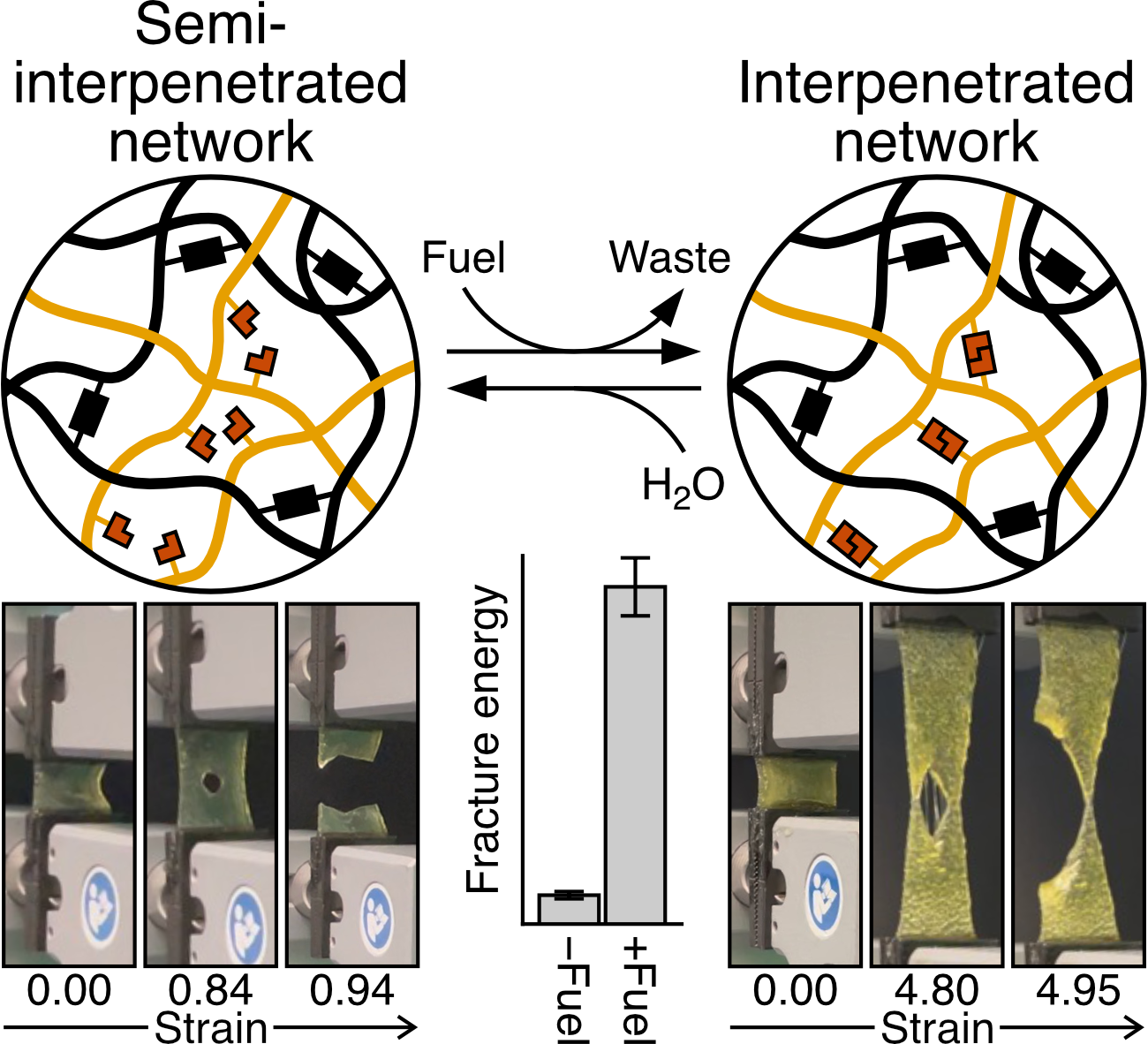Chamoni W. H. Rajawasam, Corvo Tran, Jessica L. Sparks, William H. Krueger, C. Scott Hartley,* and Dominik Konkolewicz*
Angew. Chem., Int. Ed. 2024, 63, e202400843
[Published version | DOE-PAGES | Preprint | Raw data]

Abstract
Recent work has demonstrated that temporary crosslinks in polymer networks generated by chemical “fuels” afford materials with large, transient changes in their mechanical properties. This can be accomplished in carboxylic-acid-functionalized polymer hydrogels using carbodiimides, which generate anhydrides with lifetimes on the order of minutes to hours. Here, the impact of the polymer architecture on the mechanical properties of materials was explored. Single networks (SNs) were compared to interpenetrated networks (IPNs). Notably, semi-IPN precursors that give IPNs on treatment with the carbodiimide gave much higher fracture energies (i.e., resistance to fracture) and superior resistance to compressive strain compared to other network structures. A precursor semi-IPN material featuring acrylic acid in only the free polymer chains yields, on treatment with carbodiimide, an IPN with a fracture energy of 2400 J/m2, a fourfold increase compared to an analogous semi-IPN precursor that yields a SN. This resistance to fracture enables the formation of macroscopic complex cut patterns, even at high strain, underscoring the pivotal role of polymer architecture in mechanical performance.
